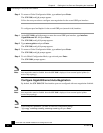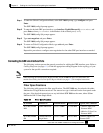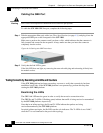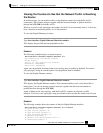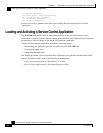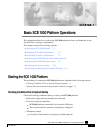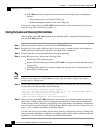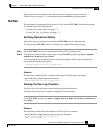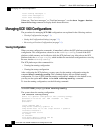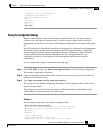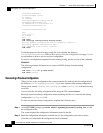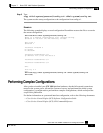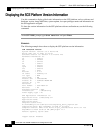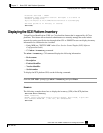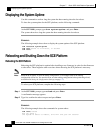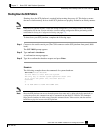
Chapter 7 Basic SCE 1000 Platform Operations
Managing SCE 1000 Configurations
Cisco SCE 1000 2xGBE Installation and Configuration Guide
7-4 OL-7821-05
Total warning messages: 0
Total error messages: 0
Total fatal messages: 0
If there are “Total error messages” or “Total fatal messages”, use the show logger device
User-File-Log command to display details about the errors.
Managing SCE 1000 Configurations
The procedures for managing SCE 1000 configurations are explained in the following sections:
• Viewing Configuration (on page 7-4)
• Saving the Configuration Settings (on page 7-5)
• Recovering a Previous Configuration (on page 7-6)
Viewing Configuration
When you enter configuration commands, it immediately effects the SCE platform operation and
configuration. This configuration, referred to as the running-config, is saved in the SCE
platform volatile memory and is effective while the SCE platform is up. After reboot, the SCE
platform loads the startup-config, which includes the non-default configuration as saved by
the user, into the running-config.
The SCE platform provides commands for:
• Viewing the running configuration
• Viewing the startup configuration
After configuring the SCE platform, you may query for the running configuration using the
command show running-config. This command displays the non-default running
configuration. To view all SCE platform running configuration, whether it is the default or not,
you may use the option all-data in the show running-config command.
To view the running configuration, use the following command:
At the SCE 1000# prompt, type show running-config.
The system shows the running configuration.
SCE 1000#show running-config
#This is a general configuration file (running-config).
#Created on 15:50:56 CET MON December 11 2005
#cli-type 1
#version 1
clock timezone CET 1
snmp-server community “public” ro
snmp-server host 10.1.1.253 traps version 1 “public”
interface LineCard 0
connection-mode active
no silent
no shutdown
flow-aging default-timeout UDP 60
interface FastEthernet 0/0



